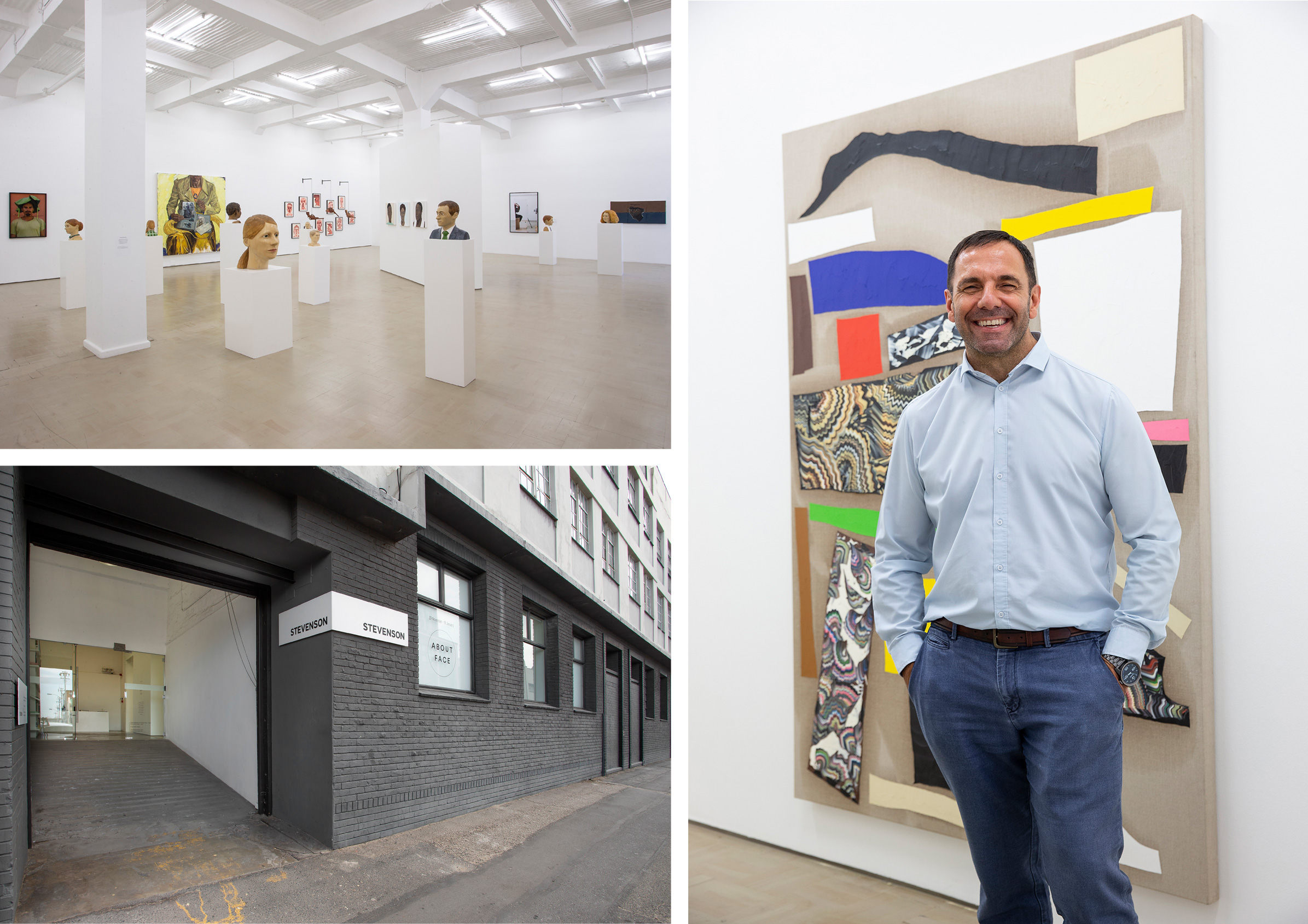Photos: Karl Rogers
The Stevenson Gallery was established in 2003 in Woodstock, a district of Cape Town, that is increasingly becoming the location of the creative scene. From the start, it concentrated exclusively on contemporary African art. While this may perhaps give us a weary smile, it is worth a special mentioning in view of the development of the art market there. As a result of Apartheid and its oppressive policies – despite coming to an end in 1994 – there were still no education opportunities or possibilities for grants for young artists on the entire continent at the time of the founding of the gallery. The more talented continued to go to Europe or the USA, and the more or less negligible local art market continued to focus on the established art of the 20th century. Andrew da Conceicao told me why it was precisely this situation that motivated Michael Stevenson and Andrew da Conceicao to establish a gallery of contemporary art and how they succeeded in growing it to the size it is today.
15 years ago, the conditions were far from ideal. Was there a key experience?
Da Conceicao: „Yes, there was. It was the documenta in 2002. As the first post-colonial documenta managed by Okwui Enwezor, a Nigerian, contemporary African art was put into a global context. We were very inspired by this. We looked at our local situation and wondered how it could be that Goodman was the only gallery, which took an interest in contemporary art in addition to the art of the twentieth century. We wanted to know why so many good artists are represented in Europe but not locally. So we wanted to change this.
And did that work immediately?
Da Conceicao: “Unfortunately not. During the first years it took a lot of grit. Fortunately, a change in the perception of contemporary art and its importance to society became noticeable over time. New education programmes at schools and particularly at the local Michaelis School of Fine Art enabled the emergence of a generation of artists who wanted a career in their own country. Berni Searle was the first colored artist who completed her education at the School and continues to lecture there. Meanwhile, a third of the students are non-white. Because of the socio-political events of the passed years, our artists simply have to tell important stories.”
How many artists are represented in your gallery?
Da Conceicao: “We currently have thirty.”
In addition to the important art fairs in Africa, you also present your artists internationally on Art Basel, Frieze London, Paris Photo or Art Basel Miami. What is the difference between presenting art at the art fairs and in the gallery?
Da Conceicao: “In our Cape Town and Johannesburg galleries, we show our entire range and enjoy experimenting with the use of space. Sometimes, entire walls are installed or removed for exhibitions. We choose specific artistic positions for the particular fairs of which we think that they may be important for the local art market. It is particularly important to us to draw the curator’s attention to our artists. If we succeed in facilitating an invitation for an important group exhibition or an art event like Biennale, they can represent themselves on a completely different platform than the one we can offer them.
Which artists would you currently represent at a fair in Germany?
Da Conceicao: „I can immediately think of Wim Botha, Zander Blom, Robin Rhode, Moshekwa Langa, Nicholas Hlobo and Kemang Wa Lehulere.“
It is a special service of your gallery to prepare and produce top-quality publications for all artists, ready to print or to be digitalised.
Da Conceicao: “This service is conceived for communication and contact. Our text can be used, one-on-one, for external catalogues. At the same time, we want to enable our gallery visitors to glean information from them on the relevant works.”
You manage the gallery in form of a partner company. This is rather unusual in this field. Why did you make that decision?
Da Conceicao: “It is the best option to allow people to share in the success of the gallery. Our entire team is passionate about the art. To sustain this passion, we keep adjusting our structure to the continuously changing conditions.
Regarding changing conditions: To what extent does the noticeable spirit of optimism in the local art scene impact on you?
Da Conceicao: “In many different ways. The sales to foreign visitors are growing. The increasing gentrification of Woodstock also makes it possible that the number of visitors of our gallery keeps going up. Some days it feels like a museum (laughs). We also notice a clear change at the Cape Town Art Fair, that takes place every February. An increasing number of international galleries are taking part, with the result that both collectors and artists get a much broader view of the art.”
Wrapping up, I ask, so, gone is the time, when African art was mainly associated with exotic masks, wood craft and hand weaving?
Da Conceicao, clearly proudly, tells me: „It is amazing. Foreign visitors continue to come to us with completely wrong perceptions. But it is wonderful to see them return home with completely different impressions”.
More Information
… about Stevenson Gallery: https://www.stevenson.info










